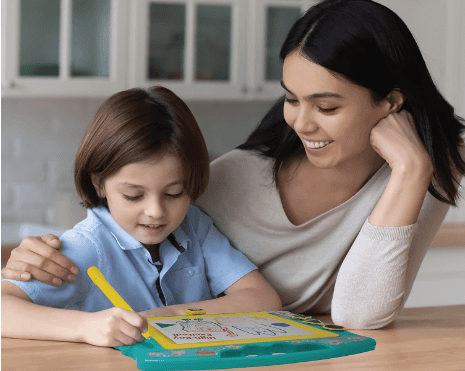5 Benefits of Teaching Coding to Elementary School Students (Resources Included)

|
Getting your Trinity Audio player ready...
|
Why should we teach coding to elementary school students?
According to research, teaching coding to elementary school students leads to improvements in engagement, academics, and behavior. Many parents, teachers, and students have indicated that they are pleased with the positive impact of coding programs in the elementary grades.
As technology, which involves coding and programming, is now woven into the fabric of our everyday lives, it makes sense that coding would be a beneficial skill for the future.
One can start learning coding at an early stage in life. Coding helps develop the minds of children—they can think of solutions and try new ideas. They can learn from their mistakes and try again until they have a final working product, game, etc.
Coding may seem complex, but drag-and-drop apps like Microsoft’s Kudo, Scratch, and Hopscotch have been created to make coding fun for children.
These apps give children an introduction to coding programs and code writing. Students will get the same end product that they would from writing more advanced coding.
5 Benefits of Teaching Coding to Elementary Age Students:
1. Coding teaches children how to be logical thinkers and problem solvers.
When children write code, create web pages, and make simple games using apps like Kudo, they learn to see problems as a situation to improve, and not a as STOP sign.
“Computer programming isn’t just about teaching how to type lines of code; it is more about teaching children how to think differently.”
To code effectively, one needs to use logical thinking. Children need to be able to see a large problem and break it down into smaller pieces in order to solve it in an effective manner, which is called decomposition.
They need to be able to strengthen their brain and think of a way out, even when faced with challenges and mistakes.
As children learn how to solve “coding” problems, they naturally strengthen their minds, which can improve the way they solve problems in general (outside of the coding world).

2. Students will build confidence and social skills as they learn to code.
As students work through mistakes, solve problems, and create and upgrade their own work, they will naturally build confidence and self-esteem.
Students can also enhance their social skills while they collaborate with their fellow students. Children coding together must be able to share ideas, get along, compromise, listen, wait, etc.
3. Coding expands a child’s creativity.
When children learn how to code, it gives them the opportunity to create something fun in a new and exciting way.
Students can turn their ideas, interests, and imagination into a real-life product that they can use.
4. Coding improves students’ academic skills.
Coding helps students learn how to plan and be organized—this can help improve skills in writing and general planning of assignments.
Learning to code also requires students to apply mathematics in their daily activities, naturally enhancing their math skills. They must know how to calculate, and solve easy or difficult problems.
5. Programming is a beneficial skill for the future.
The world is advancing, and coding is a useful skill to have. There are a lot of business sectors relying on coding.
Computer coding is not only done for the technology sectors but also for finance, health, and other niches. When children learn how to code, they have an advantage in the future—they have the ability to work in any sector, and they will have more career opportunities.
See great resources for teaching coding below:
- Scratch: Resnick and his team at MIT created Scratch to help students think systematically and creatively while working in collaboration with one another. Teachers are able to create an account for the classroom. Scratch is for students age 8 and above; students need to have the ability to read.
- MIT app inventor: This is a more advanced tool for coding, which is for students in grades 7 and above. However, this app and anything created with the MIT app inventor can be used only on Androids.
- Code Studio: This coding tool is for students ages four and up. Students can learn the basics of coding as well as learn computer science through online courses.
- Coding workbooks: Coding workbooks are fun and an easy way to engage young minds to learn to code and solve math problems, which can boost their critical thinking skills (e.g., analyzing, solving problems, and making decisions).







